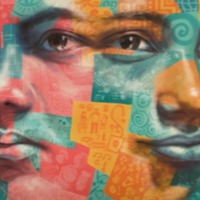
Mi-Kyung Kim
The Global Slavery Index 2018 estimates that there are 2,640,000 people living in conditions of modern slavery in The Democratic People’s Republic of Korea (North Korea). Men, women and children are subjected to forced labour and sex trafficking. Government oppression in the DPRK prompts many North Koreans to flee the country in ways that make them vulnerable to human trafficking in destination countries. Many of the estimated 10 000 North Korean women and girls who have migrated illegally to China to flee abuse and human rights violation are particularly vulnerable to trafficking. Some lure, drug, detain or kidnap North Korean women on their arrival, others offer jobs but subsequently force the women into prostitution, domestic service, or forced marriage. If found, Chinese authorities often repatriate victims back to the DPRK where they are subjected to harsh punishment including forced labour in labour camps or death.Mi-Kyung Kim escaped North Korea into China in 2009. However upon arrival she was sold and forced to work computer chatting with men.
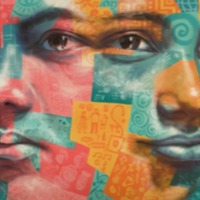
Keum-Ju Kim
The Global Slavery Index 2018 estimates that there are 2,640,000 people living in conditions of modern slavery in The Democratic People’s Republic of Korea (North Korea). Men, women and children are subjected to forced labour and sex trafficking. Government oppression in the DPRK prompts many North Koreans to flee the country in ways that make them vulnerable to human trafficking in destination countries. Many of the estimated 10 000 North Korean women and girls who have migrated illegally to China to flee abuse and human rights violation are particularly vulnerable to trafficking. Some lure, drug, detain or kidnap North Korean women on their arrival, others offer jobs but subsequently force the women into prostitution, domestic service, or forced marriage. If found, Chinese authorities often repatriate victims back to the DPRK where they are subjected to harsh punishment including forced labour in labour camps or death.Keum-Ju Kim left North Korea in 2009, travelling with a neighbour to China. However once she arrived, her neighbour sold her to a Chinese man.
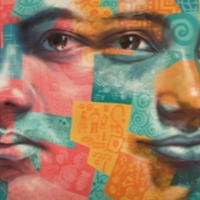
Heyab
There are an estimated 451,000 people living in modern slavery in Eritrea (GSI 2018). The small country has a unique system of compulsory, open-ended military service for citizens that makes it one of the most oppressive states in the world. The government has enforced its current policy of sending all secondary school students to serve for a minimum of twelve months since 2003. While Eritrean law puts the minimum conscription age at 18, many teenagers find themselves recruited during high school at age 16 or even younger. In rural areas, where formal education is rarer, the army will visit villages to round up young girls and boys who look roughly of age, to begin their program of combat training and forced labour. Heyab was caught trying to flee the country in 2009 when she was 16 years old and imprisoned for eight months. While in prison she was subjected to physical abuse and beatings.
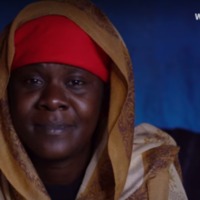
Almasie
There are an estimated 328,000 people living in conditions of slavery in Kenya (GSI 2018). Men, women and children are subjected to exploitation amounting to modern slavery in forced labour and sex trafficking. Children are often subjected to forced labour in domestic service, agriculture, fishing, cattle herding, street vending and begging. They are also victims of commercial sexual exploitation throughout the country, in khat cultivation areas, near gold mines and along the highway and Lake Victoria. Moreover, those residing in Kenya's largest refugee camp Dadaab are often vulnerable. Men and women are often lured by employment agencies offering attractive job opportunities, then find themselves trapped in domestic servitude, massage parlors and brothels or forced manual labour. Almasie was looking for work when she was offered a job as a cleaner in another town. However, upon passing the interview, Almaise was taken to another room and forced to provide sexual services to men. Almaise was there for six months before she was able to escape and found support from HAART.
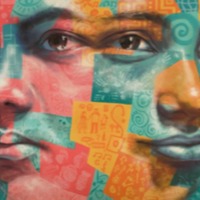
Suresh
There are an estimated almost 8 million people living in modern slavery in India (GSI 2018). India has a population of more than 1.3 billion people, there are still at least 270 million people living on less than US$1.90 per day. While laws, systems and attitudes regarding key 'fault lines' such as the caste system, gender and feudalism are rapidly changing, social change of this depth and scale necessarily takes time. In this context, it is perhaps unsurprising that existing research suggests that all forms of modern slavery continue to exist in India, including intergenerational bonded labour, forced child labour, commercial sexual exploitation, forced begging, forced recruitment into nonstate armed groups and forced marriage. Suresh is 14 years old and describes a lack of legal agreement with her employer leaves her vulnerable to labour exploitation.

Ronny
In the US, slavery occurs in both legal and illicit industries, including in commercial sex, hospitality, traveling sales crews, agriculture, seafood, manufacturing, janitorial services, construction, restaurants, health care, care for persons with disabilities, salon services, fairs and carnivals, peddling and begging, drug smuggling and distribution, and child care and domestic work. Individuals who entered the United States with and without legal status have been identified as trafficking victims. Government officials, companies, and NGOs have expressed concern about the risk of human trafficking and slavery in global supply chains, including in federal contracts. Victims originate from almost every region of the world.
Ronny’s account mentions some common features of this kind of slavery: a false promise of a lucrative job, withheld wages, debt bondage that is made difficult or impossible to pay off, and threats against the worker and their family. Ronny has become an advocate for survivors of slavery in the United States.
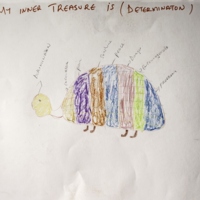
Almasi
Almasi was enslaved within Kenya. She was deceived by a childhood friend who said she could work as a cleaner in Mombasa. But instead she was taken to a house that served as a brothel and enslaved for six months. She escaped by jumping out of a moving vehicle. She later discovered that she was HIV positive. As part of the process of narrating her story, she also created artwork. Her narrative explains the images of a wing and a tortoise. Almasi is a fictional name to protect the narrator's identity.